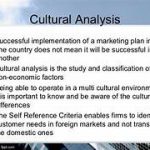Exploring the Relationship Between Product Packaging and Consumer Decisions
Product packaging plays a pivotal role in shaping consumer behavior. Beyond merely containing and protecting goods, packaging serves as a powerful communication tool, influencing perceptions, creating brand identity, and even driving purchasing decisions. In this article, we delve into the multifaceted relationship between product packaging and consumer choices, exploring how design, psychology, and functionality converge to impact the marketplace.
The Role of Packaging in Consumer Perception
- First Impressions Matter: Packaging is often the first point of contact between a consumer and a product. Studies show that consumers form impressions about a product within milliseconds of seeing its packaging. A visually appealing design can evoke positive emotions and encourage consumers to explore further.
- Brand Identity and Recognition: Packaging serves as a tangible representation of a brand’s identity. Consistent use of colors, logos, and typography helps establish brand recognition. For example, Coca-Cola’s iconic red and white packaging is instantly recognizable worldwide.
- Conveying Product Quality: The materials and finishes used in packaging can influence perceptions of quality. A sturdy, well-designed package often suggests a premium product, whereas flimsy packaging may lead consumers to question its value.
Psychological Influences of Packaging
- Color Psychology: Colors play a significant role in shaping consumer emotions and decisions. Bright colors like yellow and red can grab attention and stimulate appetite, making them popular choices for food packaging. In contrast, green and blue often evoke feelings of trust and sustainability, appealing to eco-conscious consumers.
- Typography and Imagery: Fonts and images contribute to how a product is perceived. Elegant, serif fonts can suggest sophistication, while playful, sans-serif fonts may convey a sense of fun. Imagery, too, can evoke specific feelings, such as freshness in food products or luxury in cosmetics.
- Shape and Structure: The shape of packaging influences functionality and aesthetic appeal. Unique shapes can differentiate a product on crowded shelves, while ergonomic designs enhance usability. For instance, tetra packs for liquids are popular for their convenience and durability.
- Emotional Connection: Packaging that tells a story or aligns with a consumer’s values can create an emotional bond. Products with packaging that highlights sustainable practices or local sourcing often appeal to socially conscious consumers.
Functional Aspects of Packaging
- Ease of Use: Packaging should be intuitive and convenient to use. Features like resealable closures, easy-pour spouts, or single-serve portions enhance user experience and encourage repeat purchases.
- Product Protection: The primary function of packaging is to protect the product from damage, contamination, or spoilage. Durable materials and innovative designs ensure products reach consumers in optimal condition.
- Sustainability: Modern consumers increasingly prioritize eco-friendly packaging. Recyclable, biodegradable, or reusable materials not only reduce environmental impact but also enhance brand image among environmentally conscious buyers.
- Portability and Storage: Compact and stackable packaging is convenient for storage and transportation, making it more appealing to consumers with limited space or those frequently on the go.
The Influence of Packaging on Purchasing Decisions
- Standing Out on Shelves: In a retail environment, products compete for attention. Packaging that is visually distinct or innovative can attract curious shoppers. Eye-tracking studies indicate that consumers often gravitate toward packages with bold designs or unique shapes.
- Impulsive Purchases: Packaging can trigger impulsive buying behavior, particularly for small, low-cost items. Bright colors, playful designs, and strategic placement near checkout counters can increase sales.
- Communicating Value: Packaging can highlight a product’s features and benefits, such as “low calorie,” “organic,” or “buy one, get one free.” Clear messaging helps consumers make informed choices and perceive greater value.
- Cultural Sensitivities: Packaging that aligns with cultural preferences and norms can significantly influence purchasing decisions in different regions. For example, minimalist designs may appeal to Japanese consumers, while bold and colorful packaging might resonate more in Latin American markets.
Case Studies of Effective Packaging
- Apple’s Minimalist Approach: Apple’s packaging reflects its brand ethos of simplicity and elegance. Clean lines, high-quality materials, and minimal text create an unboxing experience that reinforces the premium nature of its products.
- Tiffany & Co.’s Blue Box: The iconic Tiffany Blue Box is synonymous with luxury and exclusivity. Its consistent use has made it a symbol of timeless elegance, enhancing the perceived value of the jewelry inside.
- Pringles’ Functional Design: Pringles’ cylindrical canister is both unique and functional, protecting chips from breakage while also making them easily stackable and portable.
- Method’s Sustainability Focus: Method, a cleaning products brand, uses biodegradable and recycled materials for its packaging. The aesthetically pleasing designs and eco-friendly approach appeal to environmentally conscious consumers.
Trends Shaping the Future of Packaging
- Smart Packaging: Innovations like QR codes, RFID tags, and augmented reality features allow consumers to access additional information or engage with brands in interactive ways.
- Personalization: Customized packaging, such as Coca-Cola’s “Share a Coke” campaign, creates a sense of personal connection and encourages social sharing.
- Sustainable Materials: The shift toward biodegradable plastics, plant-based materials, and reusable designs is expected to grow as consumers and governments push for greener solutions.
- Minimalist Aesthetics: Clean and simple designs continue to gain popularity, reflecting a modern, sophisticated approach that resonates with today’s consumers.
- Health and Safety: In the post-pandemic era, packaging that emphasizes hygiene and safety, such as tamper-evident seals, will remain a priority.
Conclusion
Product packaging is far more than just a container; it is a vital marketing tool that influences consumer perceptions, behaviors, and decisions. By balancing aesthetics, functionality, and sustainability, businesses can create packaging that not only attracts attention but also builds trust and loyalty. As consumer expectations evolve, embracing innovation and understanding the psychology behind packaging will be key to staying competitive in a dynamic marketplace.


